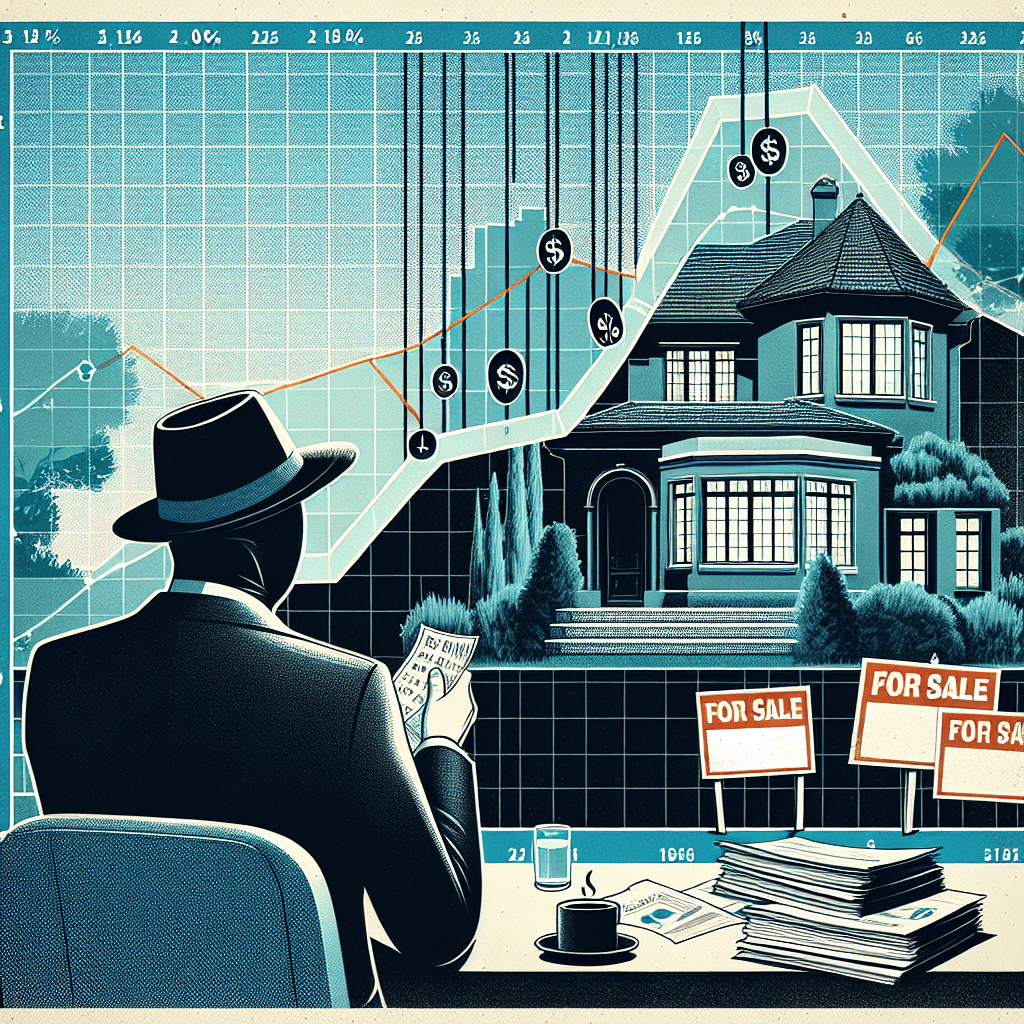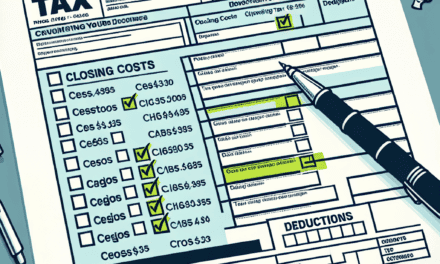“From Fed Policies to Penthouse Prices: Jerome Powell’s Ripple in Luxury Real Estate”
Introduction
Jerome Powell, as the Chair of the Federal Reserve, plays a pivotal role in shaping U.S. monetary policy, with decisions that ripple across various sectors of the economy. While his primary focus is on managing inflation and fostering employment, his policies have had unintended consequences on the luxury real estate market. The era of low interest rates, a hallmark of Powell’s tenure, has fueled unprecedented demand in high-end real estate, as affluent buyers capitalize on cheap borrowing costs to invest in opulent properties. This surge in demand has driven prices to new heights, reshaping the landscape of luxury real estate. Additionally, the influx of foreign investment, seeking stable and lucrative returns, has further intensified competition in this market segment. As a result, Powell’s monetary strategies, though aimed at broader economic stability, have inadvertently contributed to a boom in luxury real estate, highlighting the complex interplay between fiscal policy and market dynamics.
Interest Rate Hikes and Their Ripple Effect on Luxury Real Estate
Jerome Powell, as the Chair of the Federal Reserve, has been at the forefront of implementing monetary policies aimed at stabilizing the U.S. economy. One of the most significant tools at his disposal is the adjustment of interest rates, which can have far-reaching effects across various sectors. While the primary goal of interest rate hikes is to curb inflation and maintain economic stability, these adjustments often have unintended consequences, particularly in the luxury real estate market. Understanding this ripple effect requires a closer examination of how interest rates influence buyer behavior, investment strategies, and market dynamics.
Initially, interest rate hikes are designed to make borrowing more expensive, thereby cooling off an overheated economy. However, in the luxury real estate market, where transactions often involve significant sums of money, the impact of increased borrowing costs can be profound. Wealthy buyers, who typically rely on financing to leverage their investments, may find themselves reassessing their purchasing decisions. Higher interest rates translate to increased mortgage payments, which can deter potential buyers from committing to high-end properties. Consequently, this can lead to a slowdown in sales within the luxury segment, as buyers become more cautious and selective.
Moreover, the luxury real estate market is not only influenced by domestic buyers but also by international investors. These investors often view U.S. luxury properties as safe havens for their wealth. However, when interest rates rise, the cost of financing these investments also increases, potentially discouraging foreign buyers. Additionally, higher interest rates can strengthen the U.S. dollar, making American real estate more expensive for international investors whose currencies have weakened in comparison. This dual effect can lead to a decrease in foreign investment in the luxury market, further contributing to a slowdown in sales.
Furthermore, interest rate hikes can impact the supply side of the luxury real estate market. Developers and builders, who often rely on loans to finance their projects, may face higher borrowing costs, which can affect their profit margins. As a result, some developers might delay or scale back their projects, leading to a reduced supply of new luxury properties. This reduction in supply, coupled with decreased demand, can create a more competitive market environment, where sellers may need to adjust their pricing strategies to attract buyers.
In addition to these direct effects, interest rate hikes can also influence the broader economic environment, which in turn affects the luxury real estate market. For instance, higher interest rates can lead to increased volatility in the stock market, impacting the wealth of potential luxury homebuyers. As stock portfolios fluctuate, buyers may feel less financially secure, prompting them to delay or reconsider their real estate investments. This uncertainty can further dampen demand in the luxury market, as buyers adopt a more conservative approach.
In conclusion, while Jerome Powell’s interest rate hikes are primarily aimed at controlling inflation and ensuring economic stability, their unintended impact on the luxury real estate market is significant. By influencing buyer behavior, investment strategies, and market dynamics, these rate adjustments create a complex web of effects that ripple through the luxury segment. As the Federal Reserve continues to navigate the challenges of economic policy, stakeholders in the luxury real estate market must remain vigilant and adaptable to these evolving conditions. Understanding the interplay between interest rates and real estate is crucial for making informed decisions in this ever-changing landscape.
The Role of Monetary Policy in Shaping High-End Property Demand
Jerome Powell, as the Chair of the Federal Reserve, plays a pivotal role in shaping the United States’ monetary policy, which in turn has far-reaching effects on various sectors of the economy, including the luxury real estate market. While the connection between monetary policy and high-end property demand may not be immediately apparent, a closer examination reveals a complex interplay of interest rates, investor behavior, and economic confidence that ultimately influences this niche market.
To begin with, the Federal Reserve’s decisions on interest rates are a primary tool for managing economic growth and inflation. When the Fed lowers interest rates, borrowing becomes cheaper, encouraging both consumers and businesses to take out loans and invest. This environment of low interest rates often leads to increased liquidity in the market, as individuals and corporations have more access to capital. Consequently, investors seeking to diversify their portfolios may turn to luxury real estate as a stable and potentially lucrative asset class. The allure of high-end properties, often seen as a safe haven during economic uncertainty, becomes even more pronounced when financing costs are low.
Moreover, the ripple effects of monetary policy extend beyond domestic borders, influencing international investors as well. In a globalized economy, the actions of the Federal Reserve can impact currency exchange rates, making U.S. assets more or less attractive to foreign buyers. For instance, a weaker dollar resulting from lower interest rates can make luxury real estate in the United States more affordable for international investors, thereby driving up demand. This influx of foreign capital can lead to increased competition for high-end properties, further elevating prices in this segment of the market.
In addition to interest rates, the Federal Reserve’s broader monetary policy stance can affect economic confidence, which in turn influences consumer behavior. During periods of economic expansion, when the Fed adopts an accommodative policy, there is generally a heightened sense of optimism among consumers and investors. This positive sentiment can lead to increased spending and investment in luxury goods, including real estate. Conversely, when the Fed signals a tightening of monetary policy to curb inflation, it can create uncertainty and caution among investors, potentially dampening demand for high-end properties.
Furthermore, the luxury real estate market is not immune to the speculative behavior that can be fueled by monetary policy. In an environment of low interest rates and abundant liquidity, there is often a surge in speculative investments, as investors seek higher returns in a low-yield landscape. This speculative activity can drive up prices in the luxury real estate market, creating bubbles that may eventually burst when monetary policy shifts. The challenge for policymakers like Jerome Powell is to strike a balance between fostering economic growth and preventing asset bubbles that could destabilize the market.
In conclusion, while Jerome Powell’s primary focus as Chair of the Federal Reserve is on maintaining economic stability and controlling inflation, his decisions on monetary policy have unintended consequences for the luxury real estate market. Through the mechanisms of interest rates, investor behavior, and economic confidence, the Fed’s actions can significantly influence demand for high-end properties. As such, stakeholders in the luxury real estate market must remain attuned to the broader economic landscape and the signals emanating from the Federal Reserve to navigate this complex and dynamic environment effectively.
How Inflation Concerns Are Reshaping Luxury Home Investments
Jerome Powell, the Chair of the Federal Reserve, has become an influential figure in the financial world, with his policies and statements closely scrutinized by investors and economists alike. While his primary focus remains on steering the U.S. economy through turbulent times, his actions have had unintended consequences on various sectors, including the luxury real estate market. As inflation concerns mount, Powell’s monetary policies are reshaping how investors approach luxury home investments, leading to significant shifts in this high-end market.
To understand the impact of Powell’s policies on luxury real estate, it is essential to first consider the broader economic context. Inflation has been a growing concern for both policymakers and consumers, with rising prices affecting everything from groceries to gasoline. In response, the Federal Reserve has taken measures to curb inflation, primarily through interest rate adjustments. By raising interest rates, the Fed aims to cool down an overheating economy, making borrowing more expensive and, theoretically, reducing consumer spending.
However, these interest rate hikes have a ripple effect on the real estate market, particularly in the luxury segment. Traditionally, luxury real estate has been seen as a safe haven for investors looking to hedge against inflation. High-net-worth individuals often turn to tangible assets like real estate to preserve their wealth during times of economic uncertainty. Yet, as borrowing costs increase, the dynamics of investing in luxury properties are changing. Higher interest rates mean that financing the purchase of luxury homes becomes more expensive, potentially dampening demand.
Despite this, the luxury real estate market has shown resilience, adapting to the evolving economic landscape. One reason for this is the global nature of luxury real estate investments. Wealthy investors from around the world continue to view U.S. luxury properties as attractive assets, driven by factors such as political stability and the prestige associated with owning property in prime locations. Moreover, the limited supply of luxury homes in sought-after areas ensures that demand remains robust, even as financing costs rise.
Furthermore, the shift in investment strategies is evident as investors increasingly prioritize cash purchases over financed deals. With interest rates on the rise, cash transactions offer a way to circumvent the higher costs associated with borrowing. This trend is particularly pronounced among international buyers, who often have the liquidity to make substantial cash offers. Consequently, the luxury real estate market is witnessing a shift towards transactions that are less reliant on traditional financing methods.
In addition to these changes, there is a growing emphasis on the quality and uniqueness of luxury properties. As investors become more discerning, they seek homes that offer not only opulence but also long-term value. Features such as sustainability, cutting-edge technology, and prime locations are becoming increasingly important in the decision-making process. This shift reflects a broader trend in the real estate market, where buyers are looking for properties that align with their values and lifestyle preferences.
In conclusion, Jerome Powell’s efforts to address inflation have inadvertently influenced the luxury real estate market, prompting investors to reassess their strategies. While higher interest rates pose challenges, the market’s inherent resilience and adaptability continue to attract high-net-worth individuals seeking to safeguard their wealth. As the economic landscape evolves, the luxury real estate sector will likely continue to adapt, driven by a combination of global demand, cash transactions, and a focus on quality and uniqueness.
The Influence of Federal Reserve Decisions on Real Estate Pricing

Jerome Powell, as the Chair of the Federal Reserve, plays a pivotal role in shaping the economic landscape of the United States. His decisions, particularly regarding interest rates, have far-reaching implications across various sectors, including the luxury real estate market. While the primary aim of the Federal Reserve’s monetary policy is to maintain economic stability and control inflation, these decisions inadvertently influence real estate pricing, especially in the high-end market.
To understand this impact, it is essential to consider the relationship between interest rates and real estate. When the Federal Reserve adjusts interest rates, it directly affects mortgage rates. Lower interest rates generally lead to reduced borrowing costs, making it more affordable for buyers to finance luxury properties. Consequently, this can lead to increased demand in the luxury real estate market, driving up prices. Conversely, when interest rates rise, borrowing becomes more expensive, potentially dampening demand and stabilizing or even reducing property prices.
However, the influence of Federal Reserve decisions extends beyond mere interest rate adjustments. The broader economic signals sent by the Fed can also affect investor confidence and market dynamics. For instance, when the Federal Reserve signals a strong economy through its policies, it can boost consumer confidence, encouraging investment in luxury real estate as a stable and appreciating asset. On the other hand, if the Fed’s actions suggest economic uncertainty or potential downturns, investors might become more cautious, impacting the flow of capital into high-end properties.
Moreover, the luxury real estate market is not only influenced by domestic factors but also by international considerations. The United States is often seen as a safe haven for global investors, and changes in U.S. monetary policy can have ripple effects worldwide. For example, when the Federal Reserve raises interest rates, it can lead to a stronger U.S. dollar. This currency appreciation can make U.S. luxury properties more expensive for foreign buyers, potentially reducing international demand. Conversely, a weaker dollar resulting from lower interest rates might attract more foreign investment, further driving up prices in the luxury segment.
Additionally, the Federal Reserve’s policies can impact the stock market, which in turn affects the luxury real estate market. Many high-net-worth individuals who invest in luxury properties have significant holdings in equities. When the Fed’s actions lead to stock market gains, these individuals may feel wealthier and more inclined to invest in luxury real estate. Conversely, if the stock market experiences volatility or declines due to Fed policies, potential buyers might become more conservative in their real estate investments.
In conclusion, while Jerome Powell and the Federal Reserve do not directly target the luxury real estate market with their decisions, the ripple effects of their policies are undeniable. Interest rate changes, economic signals, currency fluctuations, and stock market impacts all intertwine to influence luxury real estate pricing. As such, stakeholders in this market must remain attuned to Federal Reserve actions and their potential consequences. Understanding these dynamics can provide valuable insights for investors, developers, and real estate professionals navigating the complexities of the luxury real estate landscape.
Wealth Redistribution and Its Impact on Luxury Housing Markets
Jerome Powell, as the Chair of the Federal Reserve, has played a pivotal role in shaping the economic landscape of the United States. His policies, particularly those related to interest rates and monetary easing, have had far-reaching effects, some of which extend beyond the immediate financial markets. One such unintended consequence has been the impact on the luxury real estate market, a sector that has experienced significant fluctuations in recent years. Understanding this impact requires a closer examination of the mechanisms through which monetary policy influences wealth distribution and, consequently, the luxury housing market.
To begin with, the Federal Reserve’s approach to interest rates has been a critical factor. By maintaining historically low interest rates, the Fed has made borrowing cheaper, encouraging investment in various asset classes, including real estate. This has led to an increase in demand for luxury properties, as affluent individuals and investors seek to capitalize on favorable borrowing conditions. Consequently, the luxury real estate market has seen a surge in prices, driven by heightened competition among buyers eager to secure high-end properties.
Moreover, the Fed’s policy of quantitative easing, which involves the large-scale purchase of government securities to inject liquidity into the economy, has further contributed to this trend. By increasing the money supply, quantitative easing has bolstered asset prices across the board, including those in the luxury real estate sector. This has resulted in a wealth effect, where individuals feel wealthier due to the rising value of their assets, prompting them to invest in luxury goods and properties.
However, this influx of capital into the luxury real estate market has not been without its consequences. As prices for high-end properties have soared, the market has become increasingly inaccessible to all but the wealthiest individuals. This has exacerbated wealth inequality, as those with significant financial resources are able to capitalize on rising property values, while others are left behind. The concentration of wealth in the hands of a few has led to a redistribution of economic power, with luxury real estate serving as both a symbol and a vehicle of this shift.
Furthermore, the surge in luxury real estate prices has had a ripple effect on the broader housing market. As high-end properties become more expensive, there is a trickle-down effect that influences the pricing of mid-range and even lower-end properties. This can lead to a situation where housing affordability becomes a pressing issue, as more individuals find themselves priced out of the market. In this way, the policies intended to stimulate economic growth and stability have inadvertently contributed to a housing market that is increasingly stratified.
In conclusion, Jerome Powell’s tenure as Chair of the Federal Reserve has had a profound, albeit unintended, impact on the luxury real estate market. Through policies aimed at fostering economic growth, the Fed has inadvertently fueled a surge in luxury property prices, contributing to wealth inequality and housing market stratification. As policymakers continue to navigate the complexities of economic management, it is crucial to consider the broader implications of monetary policy decisions, particularly those that affect wealth distribution and access to housing. By doing so, there is an opportunity to address these challenges and work towards a more equitable economic landscape.
The Connection Between Economic Uncertainty and Luxury Property Sales
Jerome Powell, as the Chair of the Federal Reserve, plays a pivotal role in shaping the economic landscape of the United States. His decisions on interest rates and monetary policy have far-reaching implications, not only for the broader economy but also for specific sectors such as the luxury real estate market. While his primary focus is on maintaining economic stability and controlling inflation, Powell’s actions often have unintended consequences that ripple through various markets, including high-end property sales.
Economic uncertainty, often exacerbated by changes in monetary policy, can significantly influence the luxury real estate market. When the Federal Reserve adjusts interest rates, it directly impacts borrowing costs. For potential buyers in the luxury segment, who often rely on financing to leverage their investments, higher interest rates can lead to increased mortgage costs. This, in turn, may dampen enthusiasm for purchasing high-value properties, as the cost of borrowing becomes less attractive. Consequently, Powell’s decisions on interest rates can inadvertently slow down sales in the luxury real estate market.
Moreover, economic uncertainty can lead to volatility in financial markets, affecting the wealth of high-net-worth individuals who are the primary buyers of luxury properties. Stock market fluctuations, often a byproduct of economic instability, can alter the financial standing of these individuals, making them more cautious about investing in luxury real estate. As a result, Powell’s efforts to stabilize the economy can inadvertently create a sense of caution among potential buyers, leading to a slowdown in luxury property transactions.
However, it is essential to consider that economic uncertainty does not always negatively impact the luxury real estate market. In some cases, it can drive affluent individuals to seek safe-haven assets, such as real estate, to preserve their wealth. During periods of economic instability, luxury properties can be perceived as stable investments, offering a hedge against inflation and currency fluctuations. This perception can lead to increased demand for high-end properties, as investors look to diversify their portfolios and protect their assets from economic turbulence.
Furthermore, Powell’s policies can also influence foreign investment in the U.S. luxury real estate market. Changes in interest rates and economic conditions can affect the strength of the U.S. dollar, making American properties more or less attractive to international buyers. A weaker dollar, for instance, can make U.S. luxury real estate more affordable for foreign investors, potentially boosting sales. Conversely, a stronger dollar might deter international buyers, leading to a decline in foreign investment in the luxury market.
In addition to these factors, the psychological impact of Powell’s economic policies should not be underestimated. The perception of economic stability or instability can significantly influence buyer behavior in the luxury real estate market. Confidence in the economy can encourage affluent individuals to make significant investments, while uncertainty can lead to hesitation and a wait-and-see approach. Therefore, Powell’s communication and the Federal Reserve’s transparency in conveying economic policies play a crucial role in shaping market sentiment.
In conclusion, while Jerome Powell’s primary focus is on steering the U.S. economy towards stability and growth, his actions inevitably have unintended consequences on the luxury real estate market. Economic uncertainty, influenced by changes in interest rates and monetary policy, can both hinder and stimulate luxury property sales. As such, understanding the intricate connection between economic policy and the luxury real estate market is essential for stakeholders looking to navigate this complex landscape.
Shifts in Global Investment Trends Due to U.S. Monetary Policies
Jerome Powell, as the Chair of the Federal Reserve, plays a pivotal role in shaping U.S. monetary policy, which in turn has far-reaching implications on global investment trends. One of the more unexpected consequences of these policies has been their impact on the luxury real estate market. As the Federal Reserve navigates the complex landscape of economic stability, its decisions on interest rates and monetary policy ripple through various sectors, including real estate. This influence is particularly pronounced in the luxury segment, where high-net-worth individuals and institutional investors are keenly attuned to shifts in economic indicators.
To understand this dynamic, it is essential to consider the relationship between interest rates and real estate investments. When the Federal Reserve adjusts interest rates, it directly affects borrowing costs. Lower interest rates typically lead to cheaper mortgages, making real estate investments more attractive. Conversely, higher rates can dampen enthusiasm for new acquisitions. However, the luxury real estate market often behaves differently from the broader market due to its unique characteristics and the profile of its investors. Wealthy buyers are less reliant on financing, which means that their purchasing decisions are influenced by a broader set of economic factors, including currency fluctuations and global economic stability.
In recent years, as the Federal Reserve has implemented policies to manage inflation and stimulate economic growth, there has been a notable shift in global investment patterns. Investors seeking to hedge against inflation and currency devaluation have increasingly turned to tangible assets, such as luxury real estate, as a safe haven. This trend has been further amplified by geopolitical uncertainties and the search for stable investments in a volatile global market. Consequently, cities like New York, London, and Hong Kong have witnessed a surge in demand for high-end properties, driven by both domestic and international buyers.
Moreover, the Federal Reserve’s policies have also influenced the flow of foreign capital into the U.S. luxury real estate market. As the U.S. dollar strengthens in response to monetary tightening, foreign investors may find American real estate more expensive. However, the allure of the U.S. market, with its perceived stability and potential for long-term appreciation, continues to attract international buyers. This influx of foreign capital has contributed to the resilience of the luxury real estate sector, even amid broader economic uncertainties.
Furthermore, the impact of U.S. monetary policy extends beyond direct financial considerations. The perception of economic stability and growth prospects in the U.S. can enhance the appeal of its real estate market. As investors seek to diversify their portfolios and mitigate risks, luxury properties in prime locations become attractive options. This trend underscores the interconnectedness of global markets and the influential role of U.S. monetary policy in shaping investment decisions worldwide.
In conclusion, Jerome Powell’s stewardship of the Federal Reserve has inadvertently shaped the luxury real estate market through its influence on global investment trends. While the direct impact of interest rate changes on this segment may be limited, the broader economic implications of U.S. monetary policy have driven significant shifts in investor behavior. As the world continues to navigate economic uncertainties, the luxury real estate market remains a barometer of global investment sentiment, reflecting the complex interplay of monetary policy, economic stability, and investor confidence.
Q&A
1. **Question:** How has Jerome Powell’s monetary policy impacted interest rates?
**Answer:** Jerome Powell’s monetary policy, particularly through the Federal Reserve’s interest rate adjustments, has influenced borrowing costs, affecting mortgage rates and subsequently impacting the luxury real estate market.
2. **Question:** What effect has the Federal Reserve’s policy had on luxury real estate prices?
**Answer:** The Federal Reserve’s policy, under Powell’s leadership, has contributed to fluctuations in luxury real estate prices, with lower interest rates generally boosting demand and prices, while higher rates can dampen them.
3. **Question:** How does quantitative easing relate to the luxury real estate market?
**Answer:** Quantitative easing, a policy used during Powell’s tenure, increases liquidity in the financial system, which can lead to increased investment in luxury real estate as investors seek high-value assets.
4. **Question:** What is the impact of inflation on the luxury real estate market?
**Answer:** Inflation, influenced by Federal Reserve policies, can drive investors to luxury real estate as a hedge against currency devaluation, potentially increasing demand and prices in the market.
5. **Question:** How do changes in the stock market, influenced by Powell’s policies, affect luxury real estate?
**Answer:** Changes in the stock market, often influenced by Federal Reserve policies, can affect the wealth of potential luxury real estate buyers, impacting their purchasing power and demand for high-end properties.
6. **Question:** What role does consumer confidence play in the luxury real estate market under Powell’s policies?
**Answer:** Consumer confidence, shaped by economic stability and Federal Reserve actions, affects buyers’ willingness to invest in luxury real estate, with higher confidence typically boosting market activity.
7. **Question:** How have foreign investments in luxury real estate been affected by Powell’s policies?
**Answer:** Powell’s policies, particularly those affecting the U.S. dollar’s strength and interest rates, can influence foreign investment in luxury real estate, as international buyers assess currency exchange benefits and borrowing costs.
Conclusion
Jerome Powell’s tenure as the Chair of the Federal Reserve has had an unintended impact on the luxury real estate market, primarily through the central bank’s monetary policy decisions. The Fed’s actions, particularly in response to economic challenges, have influenced interest rates and liquidity in the financial system. During periods of low interest rates, wealthy individuals have found it more attractive to invest in luxury real estate as a hedge against inflation and as a means of diversifying their portfolios. This influx of capital has driven up prices in high-end markets, making luxury properties more desirable and competitive. Additionally, the Fed’s policies have contributed to increased wealth among high-net-worth individuals, further fueling demand in the luxury real estate sector. However, as the Fed shifts towards tightening monetary policy to combat inflation, the luxury real estate market may face challenges, including higher borrowing costs and potential cooling of demand. Overall, while Powell’s primary focus has been on broader economic stability, the ripple effects of the Fed’s policies have significantly shaped the dynamics of the luxury real estate market.





